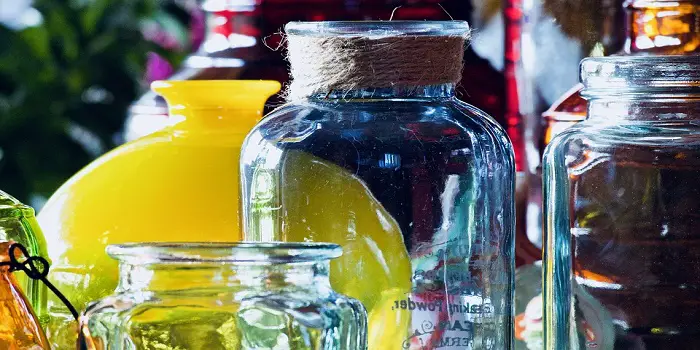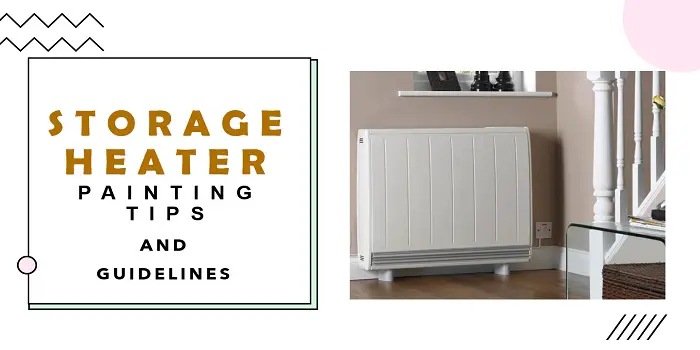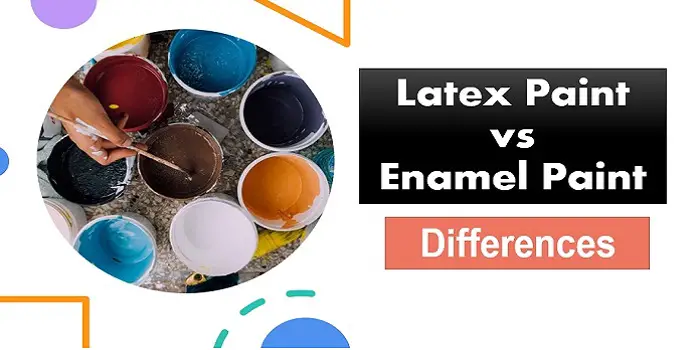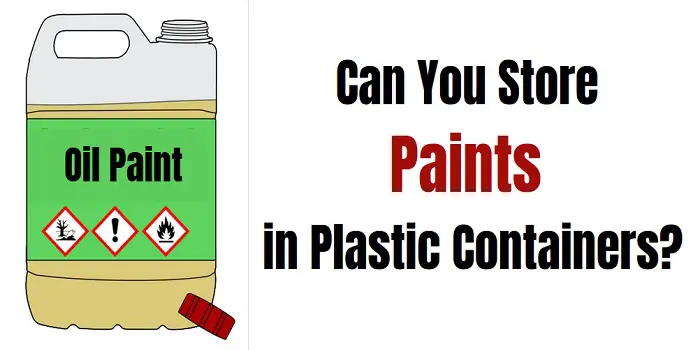
Most of us buy more paint than we need when working on a home improvement or paint project.
And that’s a great idea because storing the paint will help us do some simple touch-ups later if required without worrying about the change in color.
But the problem which many faces is they find the paint has gone bad or dried up when they need it.
Storing the paints correctly is therefore very important.
Fortunately, there are many airtight plastic containers available at paint stores that can be used to store oil-based paints safely.
You can simply buy and use them for storing leftover paints, whether oil-based or water-based.
Make sure you pick the right kind of plastic that’s intended to store the paints.
If not, paints can break up the plastic material and get degraded and dried up very soon.
What's Here in the Article:
How Long Can Oil-Based Paints Be Stored?
Depending on the brand (and how you store them in your house), many oil paints, water-based acrylic, and latex paint varieties can be stored for as long as 10-15 years before it starts to go bad and smelly.
Particularly oil-based paints, in an unopened condition, can be stored for as long as 15 years.
They are designed with a shelf life of more than a decade.
Once opened, you will need to seal and store them correctly in an airtight plastic container.
When sealed properly, you can easily store an opened oil-based enamel paint for up to 7 to 10 years without going bad.
But make sure you use them within two to three years if you are really concerned about the finish and color.
Sealing the container is important if you want to keep the paint fresh for future touch-ups or for completing smaller projects.
No matter where you plan to store the paints, make sure that you keep them in a cool, dry location that is away from direct sunlight.
Also, ensure that the place is out of reach for pets and children.
What is the Best Container Type to Store Paint?
Polyethylene terephthalate (PET) and High-density polyethylene (HDPE) materials are most recommended if you want to store the paints in a plastic container.
You are also fine to use any heavy-duty Tupperware type waterproof plastic container as they can withstand the oil base stain and paint.
As paints won’t eat these plastic materials, it will help in holding the leftover paints and stains for long without going bad.
Unlike plastic containers, metal or glass containers can be heavy and large.
Hence metal or glass containers are not the best storage solution, especially for large paint quantities.
If, however, you want to store only a small amount of touch-up paints, you can use plastic coffee containers, canning jars, or mason jars.
IMO glass mason jars can be good for storing smaller paint quantities of different colors.
When placed together, you can easily see through the jar to pick the right paint color without opening the lid.
Make sure you choose the bottle or a container that comes with a wide mouth opening and an airtight lid.
This will make opening up the lid and pouring down the paint easily.
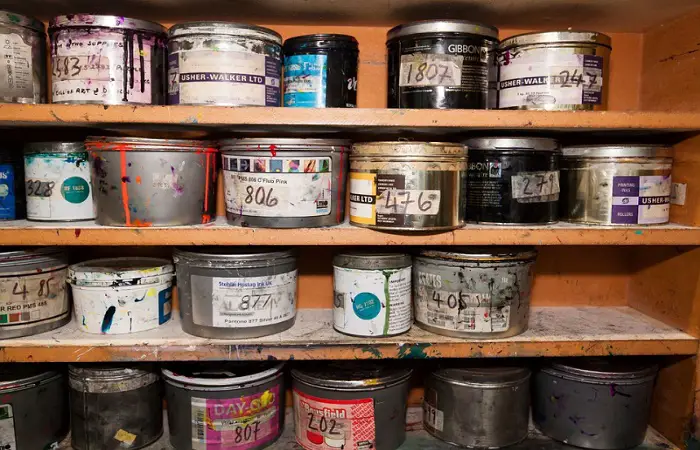
Tips for Storing Oil-Based Paints in Plastic Containers?
Oil-based paints aren’t very safe to store inside your house.
These can be flammable and, if not stored correctly, can emit dangerous chemical fumes that can create problems for your family.
It’s, therefore, best to store them in a storehouse outside your house or in an outdoor storage cabinet/shed.
Remember, light and temperature can alter the color and can degrade the quality of some paint varieties.
So, placing the plastic containers of paint in a damp-free dark area (like a closet in a garage or a basement) can also be a good idea.
If it’s an oil-based paint you are storing, the temperature range of an area should be between 60° – 80° Fahrenheit.
Acrylic or water-based latex paint containers will need to be kept in an area with a temperature ranging from around 65° – 75° F.
Few other paint storage ideas you should follow include:
- Label the jar of paint with the color name, brand, or number
- Fill up the container with paint and ensure you do not leave much air at the top
- For sealing, it’s good to use an airtight lid or caps like a twist-top cap, wadded cap, or a flip-top cap
- Before storing the plastic jar, wipe away any excess paint that’s dripping on the outside of the can
- Consider placing 4-5 pieces of marbles into the bottom of the container. Before using the paint again, you can shake them up to do all the mixing.
- Before you use the paint again, make sure you test the paint color and quality on a small piece of paper or on the surface you want to paint it with
If you find that the paint has gone bad or the color faded away, it’s good to dispose of the paint and use a fresh one instead.
What Can You Do to Preserve the Paint in a Can for Longer?
The key to successfully storing the leftover paint for future touch-ups is to limit its air exposure.
Paint will usually get dried and become unusable due to evaporation or solvents it contains.
Especially the oils and oil-based paints can easily become rancid after the can is opened and re-sealed to use after a while.
However, there are techniques you can employ to preserve your paint.
One traditional trick that painters use is to exhale into the paint can with the lid partially on.
Then immediately cap it, making sure the air doesn’t go in.
Few DIY painters and homeowners, when storing the oil paints for a shorter duration (like a day or two), even kept them in a coffee plastic cup placed in a fridge or freezer.
The cold temperature work to slow down the rate of oxidation and evaporation while preserving the paint.
However, there are few other products such as Bloxygen and compressed CO2 that can make things easier.
Bloxygen is available in spraying can, and it contains a much more stable argon gas, which is heavier than air.
You can simply spray this heavy gas into the paint can – to settle and displace the air.
Not only for preserving the paints, but you can also use Bloxygen for preserving wood finishing oils such as tung oil, linseed oil, etc.
How does it work?
Bloxygen finish preservers and alternatives like compressed gas dusters work by displacing all the oxygen in a finish can.
Not only will it work to prevent the oxidation of volatile organic compounds (VOCs), but also it will help in avoiding the molds and bacteria from growing in the can.
Plus, it will also prevent the paint from getting coagulated and skinned over.
Final Thoughts
Correctly storing the paint is important if you want to maintain its finish and color.
While heavy plastic containers like Tupperware and those available at paint stores can do the job, there are few other options like mason jars and metal containers.
Remember, you should not use your regular plastic, water bottles, yogurt containers, or other microwave plastic bowls to store the leftover paint.
Also, make sure you keep them safe in a place that is not wet and away from direct light.
Share the post "Can You Store Oil-Based Paints in Plastic Containers?"

Douglas Becker (aka Painter Doug) has over twenty years of experience as a painter in Adkins, Texas. At present, he resides in Florida with his family.
From painting multi-storeyed houses, condos, and apartments to large commercial buildings and small offices, he had served various customers in areas not only in Adkins but also in Southwest Florida, Sarasota, Naples, and many more. To know more about him check here.

